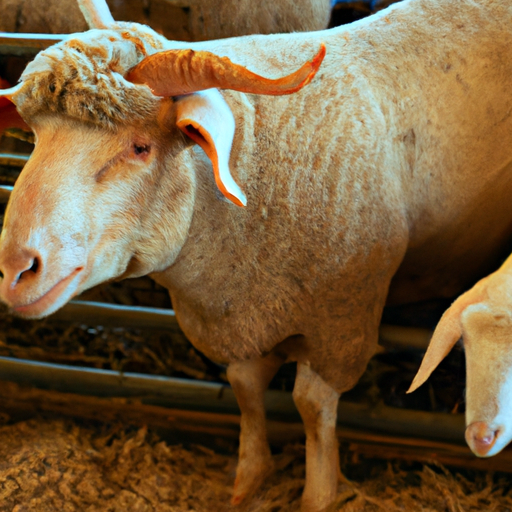 Introduction:
Introduction:
USDA Class B Animal Dealers have long been a subject of scrutiny and controversy within the animal welfare community. These dealers play a pivotal role in the sourcing and distribution of animals for research, exhibition, and other purposes. However, concerns have been raised over the years regarding the treatment and sourcing methods employed by some of these dealers. In this comprehensive article, we delve into the world of USDA Class B Animal Dealers, exploring their functions, regulations, controversies, and the ongoing efforts to improve animal welfare standards.
1. Understanding USDA Class B Animal Dealers:
1.1 Definition and Role:
USDA Class B Animal Dealers are individuals or entities licensed by the United States Department of Agriculture (USDA) to acquire, sell, and transport certain animals. They primarily deal with animals that are not bred, raised, or obtained from private sources, but rather through various means, such as auctions, shelters, and individuals who no longer wish to keep their animals.
1.2 Classification and Licensing:
USDA Class B Animal Dealers are classified under the Animal Welfare Act (AWA) as individuals who sell animals for purposes other than research, exhibition, or public display. To operate legally, these dealers must obtain a Class B license from the USDA, which involves adhering to specific regulations and standards.
2. Regulations and Oversight:
2.1 The Animal Welfare Act (AWA):
The AWA is a federal law that sets the standards for the treatment and care of animals used in research, exhibition, or sale. USDA Class B Animal Dealers fall under the regulatory purview of the AWA, which outlines guidelines for their licensing, record-keeping, housing, transportation, and overall animal welfare.
2.2 Licensing Requirements:
To obtain a Class B license, applicants need to prove their eligibility, such as demonstrating proper facilities, knowledge, and experience in animal care. The USDA conducts inspections to ensure compliance with AWA standards and may impose penalties or revoke licenses in case of violations.
2.3 Record-Keeping and Reporting:
USDA Class B Animal Dealers must maintain detailed records of animal acquisitions, sales, and transportation. These records act as a traceability mechanism and are subject to periodic inspections by USDA inspectors. Reporting requirements also include the identification and health status of the animals.
3. Controversies and Criticisms:
3.1 Sourcing Methods:
One of the main concerns surrounding USDA Class B Animal Dealers is the sourcing of animals. While some dealers acquire animals through legitimate means, others have been accused of obtaining animals through unethical channels, such as theft, illegal breeding operations, or so-called “bunchers” who procure animals from random sources.
3.2 Animal Welfare:
Critics argue that some USDA Class B Animal Dealers do not provide adequate living conditions or veterinary care for the animals they handle. Reports of overcrowded housing, lack of medical attention, and poor transportation practices have raised significant concerns about the welfare of animals in their custody.
3.3 Legislative Efforts:
Over the years, numerous legislative initiatives have been introduced to address the concerns associated with USDA Class B Animal Dealers. Proposals have included increased regulations, stricter licensing requirements, and even outright bans on Class B dealers. These efforts aim to improve animal welfare standards and ensure the ethical sourcing and treatment of animals.
4. Ongoing Improvements and Reforms:
4.1 USDA Inspections and Enforcement:
The USDA conducts routine inspections of USDA Class B Animal Dealers to ensure compliance with AWA regulations. In recent years, the agency has taken steps to enhance inspections and enforcement efforts, imposing stricter penalties for non-compliance and increasing the frequency of unannounced visits.
4.2 Collaboration with Animal Welfare Organizations:
The USDA has partnered with various animal welfare organizations to improve the oversight and regulation of USDA Class B Animal Dealers. Collaborative efforts include sharing information, conducting joint inspections, and implementing best practices to ensure animal welfare.
4.3 Public Awareness and Education:
Raising public awareness about the issues surrounding USDA Class B Animal Dealers is crucial in driving change. Animal welfare organizations, activists, and concerned citizens strive to inform the public about the controversies associated with these dealers, urging individuals to support ethical alternatives and advocate for stricter regulations.
Conclusion:
USDA Class B Animal Dealers have long been a subject of debate, with concerns raised regarding their sourcing methods and animal welfare practices. While the USDA has implemented regulations and enforcement mechanisms to improve oversight, controversies persist. It is crucial for society to remain vigilant, support legislative reforms, and promote ethical alternatives to ensure the welfare of animals involved in research, exhibition, and other purposes.
